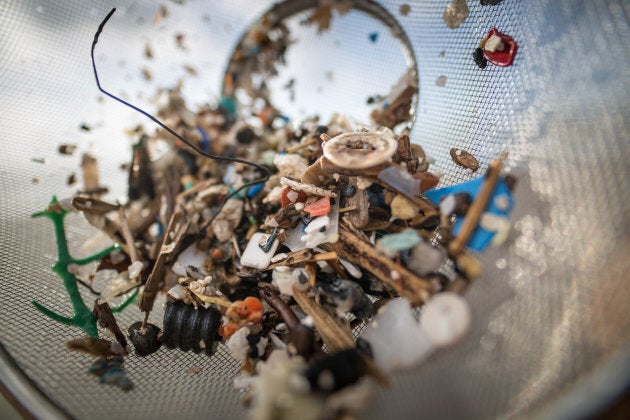
Researchers have found microplastics in human stools for the first time, according to a new study presented at the 26th UEG Week (United European Gastroenterology Week) in Vienna.
Carried out by researchers from the Medical University of Vienna and the Environment Agency Austria, the small pilot study looked at eight participants from countries around the the world including Finland, Italy, Japan, the Netherlands, Poland, Russia, the U.K. and Austria.
The participants were asked to keep a food diary for one week before providing stool samples for analysis at the Environment Agency Austria.
After analyzing the samples for 10 types of plastic using a new analytical procedure, the researchers found that every single stool sample tested positive for the presence of microplastic — small particles of plastic less than 5 mm in size.

Up to nine different plastic types were found, sized between 50 and 500 micrometers. On average, the researchers found 20 microplastic particles per 10g of stool.
Polypropylene (PP), which is used in food packaging, and polyethylene terephthalate (PET), used in plastic bottles, were the most common plastic found. The participants' food diaries also showed that they had all been exposed to plastics through their diet by consuming foods wrapped in plastic or drinking from plastic bottles.
The diaries also showed that none of the participants were vegetarians and six of them consumed sea fish. It is estimated that, due to pollution, two to five per cent of all plastics produced end up in the seas where they are consumed by sea animals and enter the food chain. They are then likely to also be consumed by humans. Significant amounts of microplastic have already been detected in tuna, lobster and shrimp.
WATCH: Are you seasoning your food with microplastics? Story continues after video.
The findings are concerning as microplastic may negatively affect human health by entering the gastrointestinal tract, where it could affect the tolerance and immune response of the gut.
Lead researcher Dr. Philipp Schwabl commented on the findings saying, "This is the first study of its kind and confirms what we have long suspected, that plastics ultimately reach the human gut. Of particular concern is what this means to us, and especially patients with gastrointestinal diseases."
"While the highest plastic concentrations in animal studies have been found in the gut, the smallest microplastic particles are capable of entering the bloodstream, lymphatic system and may even reach the liver. Now that we have first evidence for microplastics inside humans, we need further research to understand what this means for human health."